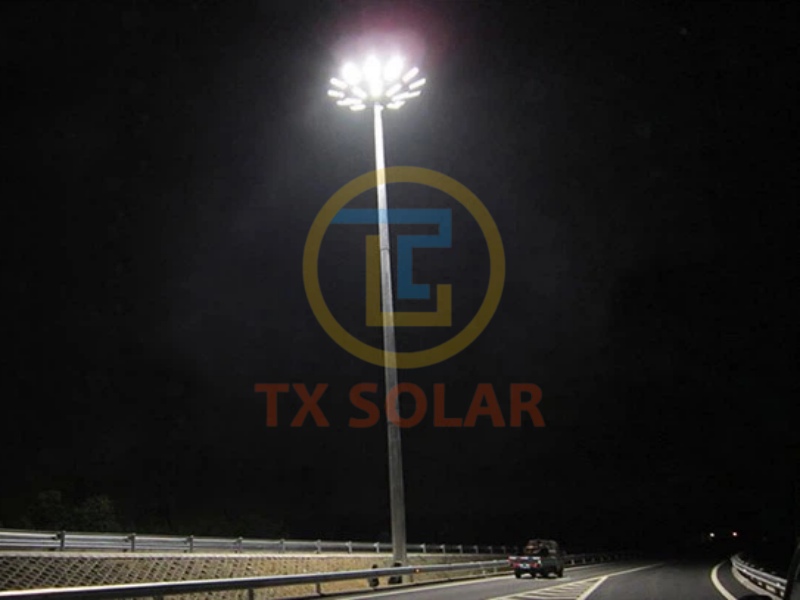High mast lighting is a term used to describe a lighting system that involves lights mounted on a tall pole called a high mast. These lighting fixtures are used to illuminate large areas such as highways, airport runways, sports venues, and industrial complexes. The purpose of high mast lighting is to provide optimal visibility and enhance safety in these areas, especially at night.
The concept of high mast lighting is not new as it has been around for decades. However, as technology advances, high mast lighting has become more efficient and effective at providing bright, even illumination over large areas. High mast lighting systems typically consist of a tall mast 30 to 150 feet tall with a lighting fixture mounted on top.
The main advantage of high mast lighting compared to traditional lighting systems is the ability to cover a large area with fewer poles. This is because tall masts allow the lights to be placed at a higher height, resulting in wider coverage. High mast lighting systems can also be equipped with electric or manual lowering devices, making maintenance and repairs easier and safer.
In terms of lighting technology, high mast lighting installations usually use high-intensity discharge lamps (HID), such as metal halide lamps or high-pressure sodium lamps. These lights are known for their high lumen output and long lifespan. LED technology is also increasingly used in high-pole lighting due to its superior efficiency, longevity, and cost-effectiveness. LED high pole lights provide better lighting quality, lower energy consumption, and longer maintenance intervals than traditional HID lights.
In order to achieve the required lighting levels and uniformity, the placement of high mast lighting is critical. Careful planning and design are required to determine the correct spacing, height, and number of tall masts required for a specific area. Factors such as the level of lighting required, the type of activity being performed and the surrounding environment should be considered.
High mast lighting has many uses. One of the main benefits is improved security. Adequate lighted areas are critical to reducing accidents, deterring criminal activity, and improving overall visibility for motorists, pedestrians, and workers in industrial areas. High mast lighting also improves traffic flow, especially on highways and intersections, by ensuring clear visibility of road signs, lane markings, and potential hazards.
In addition, high mast lighting can enhance the aesthetics of large areas, such as sports stadiums and public spaces. High mast lighting provides lighting that allows events and activities to take place even after dark, extending the usability and appeal of these spaces.
In conclusion, high mast lighting is an important lighting solution capable of illuminating large areas with maximum efficiency and visibility. Its role in improving safety, enhancing aesthetics, and increasing productivity cannot be overstated. As lighting technology continues to advance, high mast lighting systems will continue to evolve to provide more effective and sustainable lighting solutions for our modern world.
Post time: Nov-09-2023

